Earth makes Her post-Solstice transition at this time in our/Her annual orbit, which is Her/our everyday sacred journey: no need to go anywhere! In the Southern Hemisphere it is the season of the waxing light, post-Winter Solstice; and in the Northern Hemisphere it is the season of the waxing dark, post-Summer Solstice. We as Earth cross the midpoint (the “cross-quarter”) between Solstice and Equinox on August 7th at 6:53 UTC. All planetary times for this Moment may be found at archaeoastronomy.com.
Old European traditions often name these Moments as Imbolc and Lammas/Lughnasad respectively, though those names are varied in different cultural regions, and may be named also as Early Spring and Late Summer perhaps. Many around the globe will celebrate Imbolc/Lammas on the traditional date of 1st/2nd of August, and some on the actual astronomical Moment, and some at a time when the season feels right, and some when it can be fitted into tick-tock time. There are other cultural variations of celebrating this transition of our Planet’s orbit around Mother Sun, and the Poetry we humans create with it, conversing and aligning ourselves with Her Creativity (and this is really the point of the practice).
In the oldest Earth-based traditions of Europe, Imbolc/Early Spring (which may be felt as Late Winter depending on your region), may be a time of dedication to the new life emerging anywhere, including in the self: to watch for it, and attend to it. Sometimes in a culture of self-abnegation or suppression of difference, this can be a challenge; so it is even more significant to step up and celebrate the unique small self, the particular gift that each self is, as well as celebrating new life in flora and fauna. This Season of Imbolc/Early Spring lends itself to ceremonial commitment to bringing forth and nurturing what may be new and tender, or untried: a time for celebrating diversity. It is traditionally celebrated as a special feast of Great Goddess Brigid of the Celtic peoples, who tends the flame of being: She has traditionally been recognized as the Flame of Being itself, way beyond anthropomorphic representations of Her.
Imbolc/Early Spring is a particular time to celebrate of the new Young One, the Promise of Life. It is often understood as a very maternal kind of celebration … and indeed that is the nature of re-generative mind, no matter what variety of gender/sex you may identify with. To take on Maternal mind, a re-generative/Maternally connected mind is what the Planet seriously needs more of from all beings: that is, a mind that is attentive to the quality of care. Any being may learn how to do this, to pay that kind of nurturant attention: and it is useful practice to call upon the deeper ancient powers to guide and strengthen. The nurturance of life is for the brave and courageous.
Whereas, Lammas/Lughnasad (which may be felt as Late Summer depending on your region) has been a time of harvest, when the Summer party is over, Sun’s light has peaked in this region of our Planet, and it is time for the reaping. One may understand this as metaphor for these times for much of the industrialised world in particular. In the oldest traditions it is the Old One as Crone who is welcomed, with Her gift of returning to larger deeper self within all. Her face changes now from the tending of fullness of being to dismantling and consuming, as all things must pass. She becomes the reaper.
In more recent times as Goddess became displaced, this Season became known as “Lughnasad”, the “wake”/funeral of the grain God Lugh: and traditionally straw figures of the god are burnt in ceremonies. Lammas (meaning the feast of the bread) may be an earlier name for this Seasonal Moment, though some are of the opinion that it is a Christian name: I disagree[i]… the Primordial Mother Goddess IS the grain (corn, wheat, rice) in many global indigenous cultures; and Lammas may be celebrated with the understanding that we are each and all the grain, the food, consumed – certainly after the peaking of being, if not before. The Dark is an awesome aspect of Cosmic Creativity, in which all participate. The Dark is at the base of all existence, and is the matrix and origin of being. The Dark then is a native place – Home … named and understood perhaps as Larger Self. The seasonal Moment of Lammas lends itself to ceremonial expression of dedication to this larger self, to ceremonial expression of love for this deeper self to whom all returns, the organic desire for small self-transcendance, which may be understood as an expansion, a re-joining with the Cauldron of Creativity in which we are immersed[ii].
The Dark may be experienced as a merciful place. Lammas may be the time for asking, personally and collectively: “What would I/we make sacred in my/this life? What is sacred to being/me? The understanding of, and confront with the passing of things may bring with it the blessing of “what is essential?” This Season of the harvest of life, the “Sacred Consuming” as I name it, may be a time to recognize the we are all consumed – even in every moment: so who are we feeding? and are we happy with the answer? This may be offered to the sacred Dark from whom we emerge, for transformation – for a wise path beyond your knowing, trusting the deep wisdom of the Universe, in whom we are immersed: and in trust that this actually the way to true abundance and joy.
For some Imbolc Ceremonial Poetry: PaGaian Imbolc and PaGaian Imbolc 2008 on YouTube
For some Lammas Ceremonial Poetry: PaGaian Lammas 2010 on YouTube
oOo
At my place in Australia, I will celebrate Imbolc with a small community, very close to the Moment, and I invite others in this way:
This is the Season of the waxing Light …
You are invited to celebrate
IMBOLC
the feast of the Young One
– who is the Urge To Be within All.
The New One born at the Winter Solstice
now grows.
This is the time of celebrating the small self –
each one’s Gaian uniqueness and beauty.
We meet to share the light of inspiration,
to be midwifed,
by She who tends the Flame of Being,
deeply committed to Self, and Who is True.
…oOo…
PaGaian Cosmology blogs for Imbolc. And an essay Winter-Spring EarthGaian Wisdom: Invoking the Power of Brigid, the Mother Creator
PaGaian Cosmology blogs for Lammas. And from Brian Swimme: The Sacred Cosmological Dynamic of Loss – I have learnt much about this Seasonal Moment by understanding more of the Universe story, which is the story of Who we are, and embraces transformation.
Articles that speak to the mirror reflection of Imbolc and Lammas: Making Sacred: Space for the Not-Yet and also Lammas/Imbolc Earth Moment February 2015
Imbolc and Lammas meditations are on the PaGaian Cosmology Meditations available individually in digital form, and also in CD format at that link (scroll down for the individual Season).
Some Imbolc story and Lammas story may be found in Appendix F of PaGaian Cosmology, or if you have a paper version of the book there is an Index for references throughout. These Seasonal Moments in relationship to the whole Wheel of the Year may be found in Chapter 5. Ceremonial scripts are offered in Chapter 7; the on-line versions are usually a bit different from the paper versions, as they evolve and change. and depending on your current context.
Blissed Lammas/Imbolc transition to you.
[i] re the name “Lughnasad”: There has been conversation amongst Goddess scholars about the name for this Seasonal Moment after Summer Solstice. It is commonly named amongst Pagans as “Lughnasad” after the Celtic Sun/Grain God Lugh, but as Lawrence Durdin-Robertson suggests in his book “The Year of the Goddess” (Aquarian Press 1990, p.143 quoting Adam McLean “The Four Fire Festivals” 1979, p. 21), originally the Deity of the harvest was the Goddess named Tailtu (reportedly Lugh’s “foster-mother”) so the name Tailtunasad has been suggested by Cheryl Straffon editor of Goddess Alive! Many (including myself) have preferred the name of Lammas, but some think it is a Christian term: however some sources say that Lammas means “feast of the bread” which is how I have understood it … and surely such a feast pre-dates Christianity. The evolution of all these things is complex, and we may evolve them further with our careful thoughts and experience.
[ii] or more on this understanding of Lammas see PaGaian Cosmology: Re-inventing Earth-based Goddess Religion, wherein Lammas may be celebrated with appropriate dedications made to this awesome aspect of Cosmic Creativity, in which all participate.
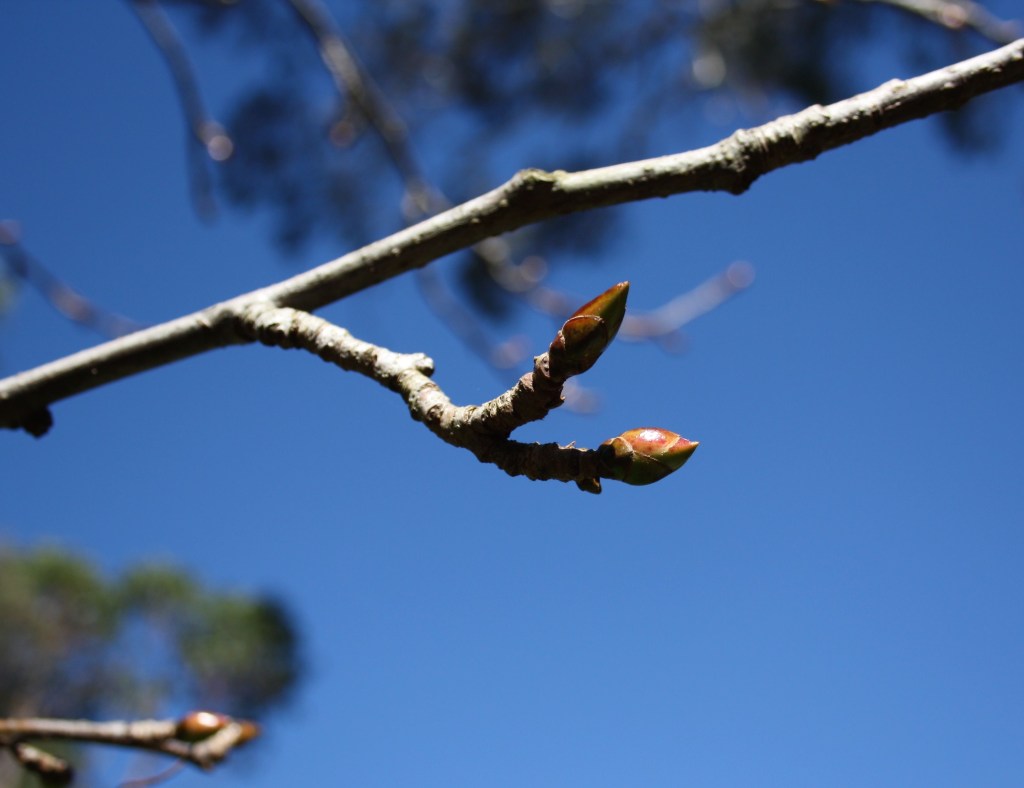
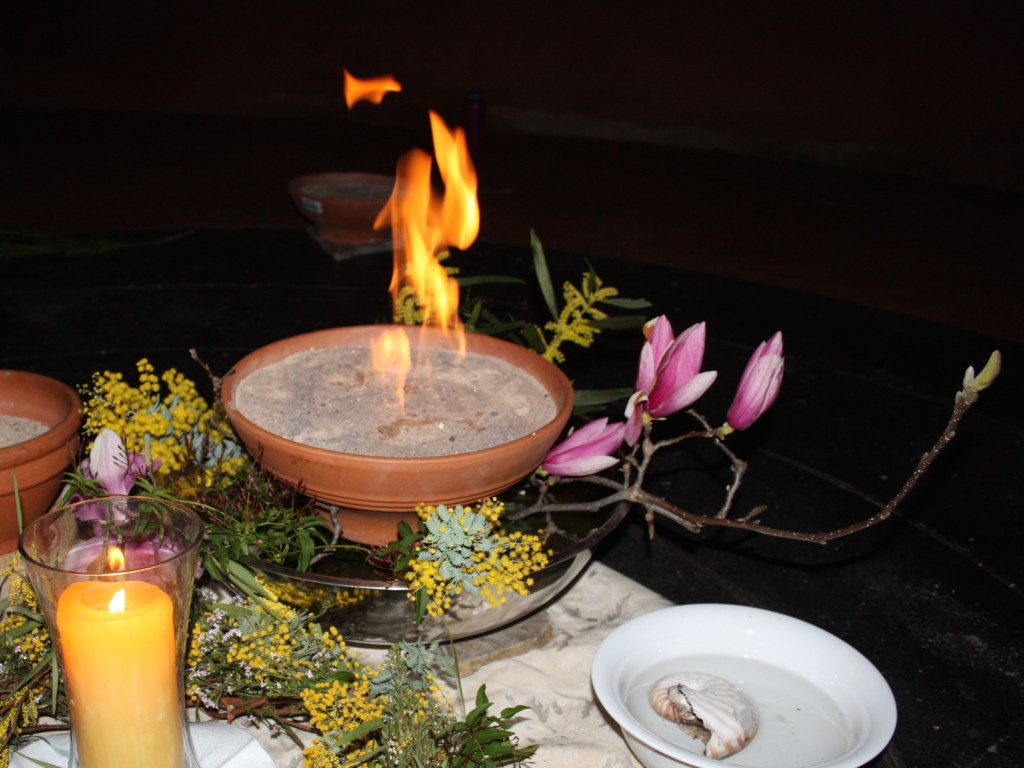
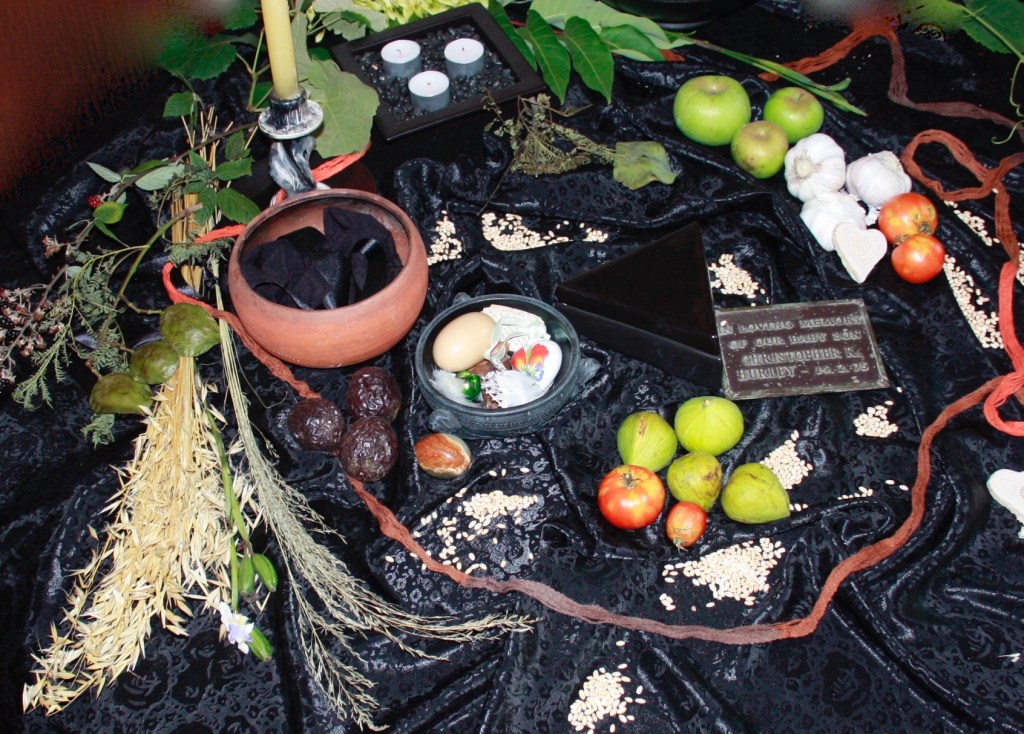
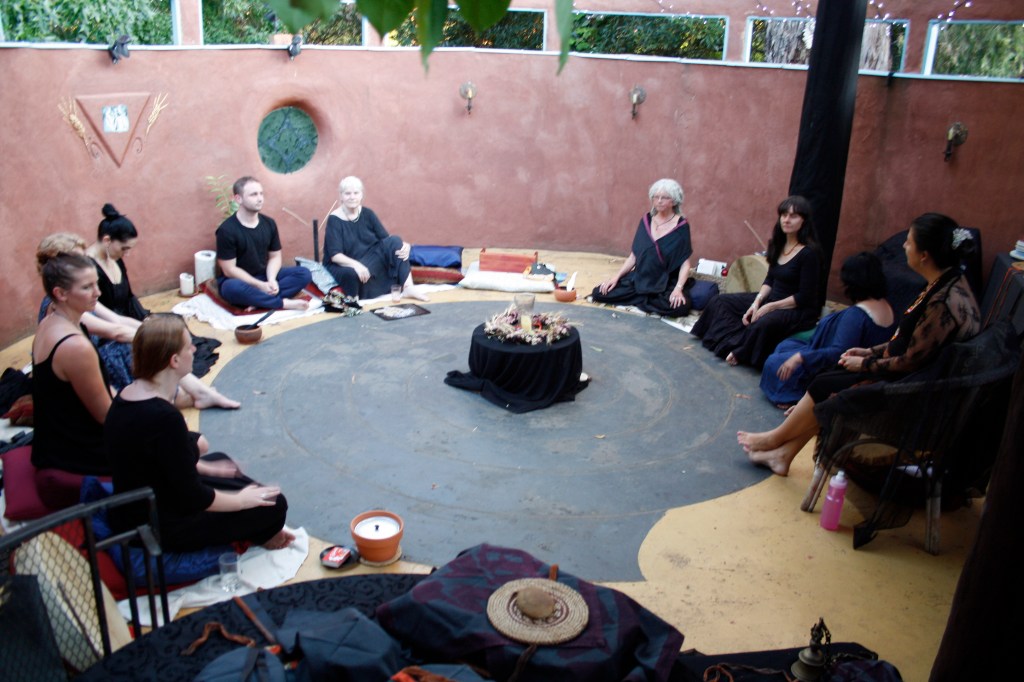


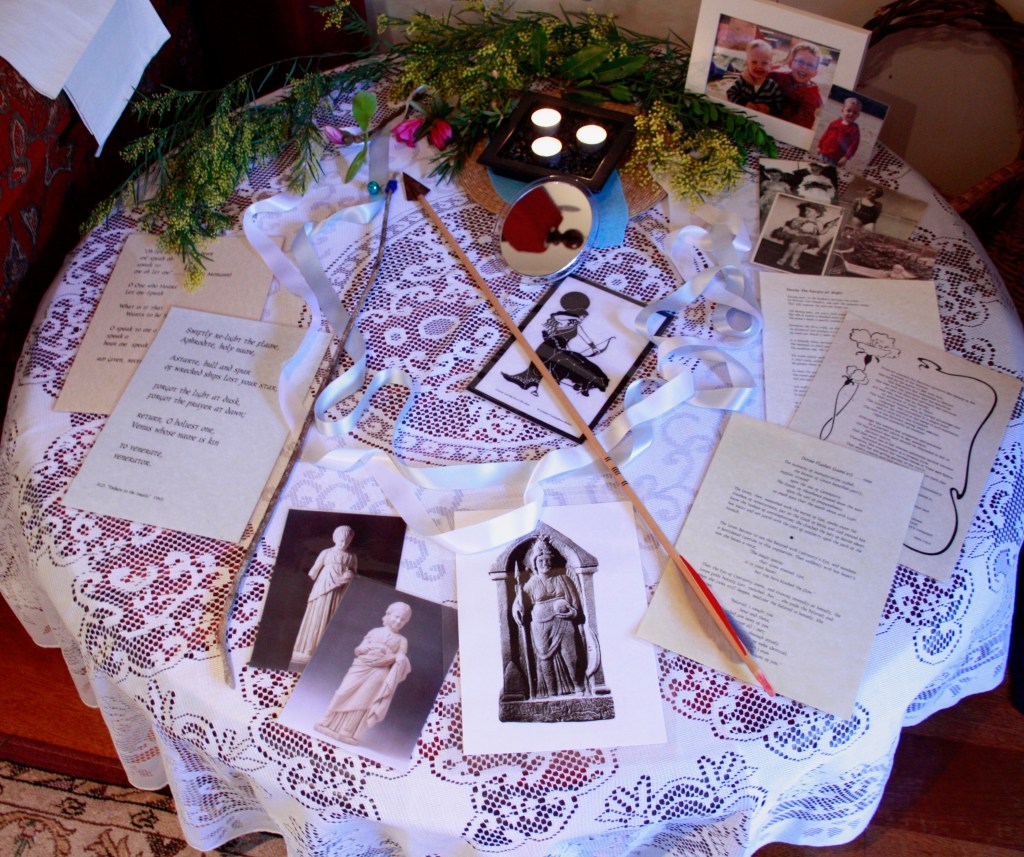
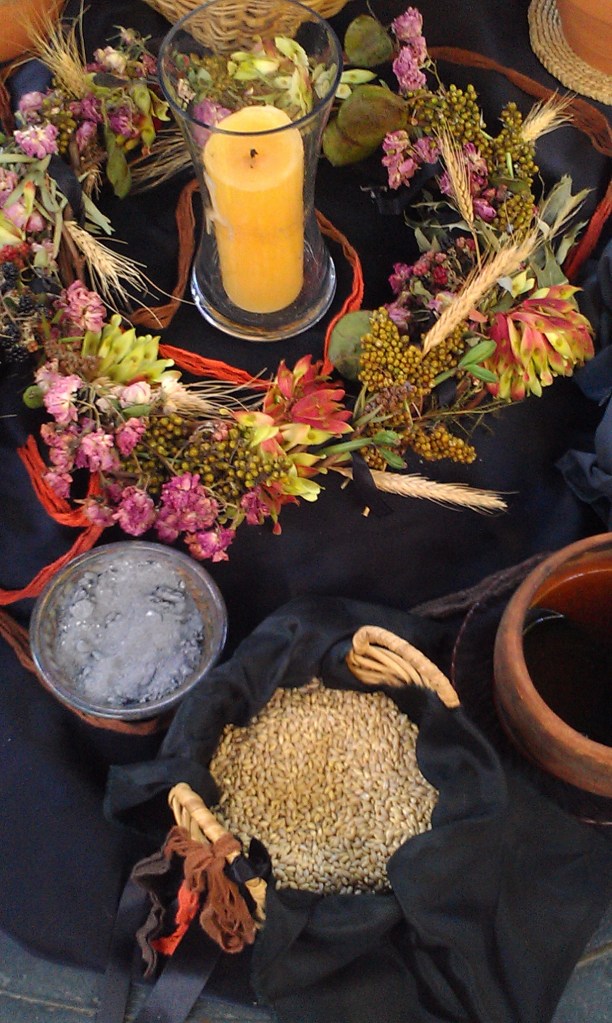
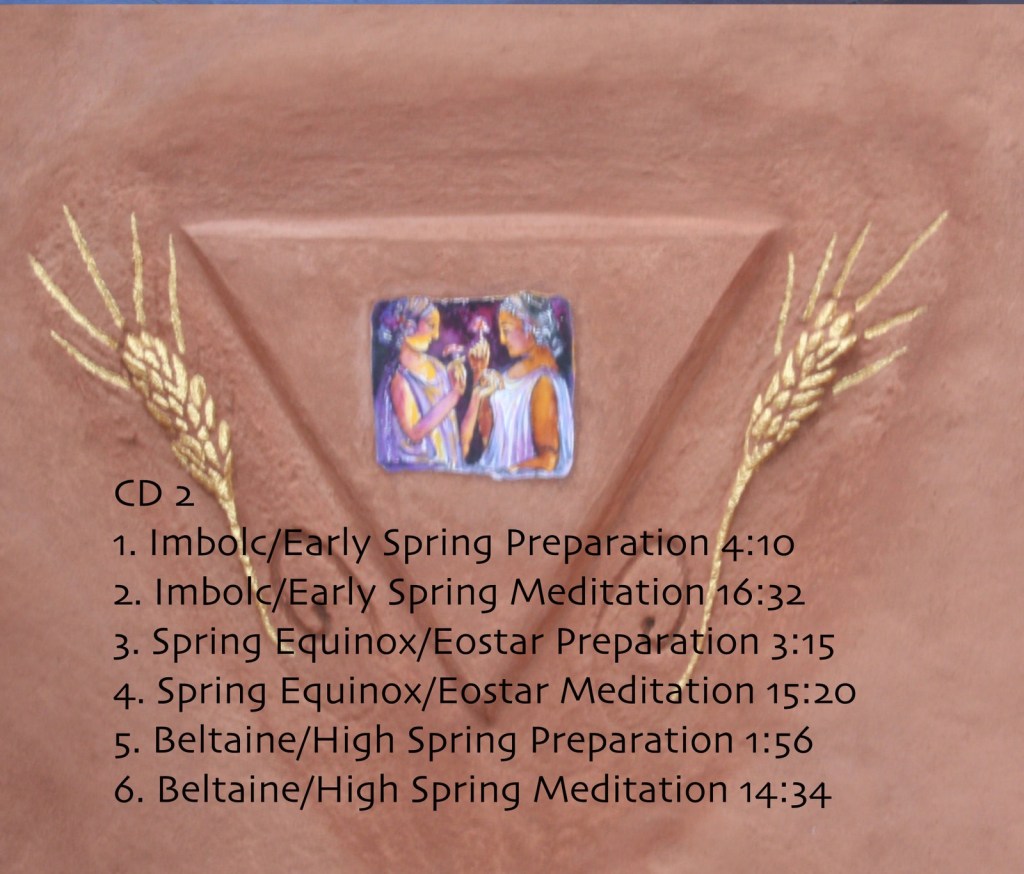


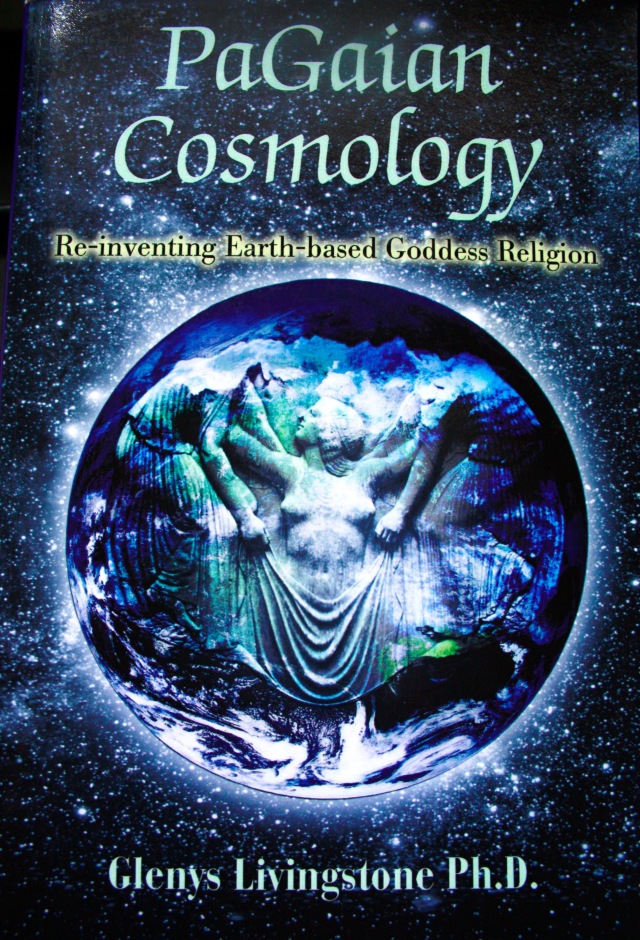


Thank you Glenys for your research into ‘Lugnasad’, I knew the ‘Lugh’ part, the ancient name of the Sun, but the ‘nasad’ was a mystery to me. You found ‘wake’. August is end of High Summer, (hence ‘wake’ or fond farewell) and approach of Autumn, the ‘season of mists and mellow fruitfulness’.
That brings us to ‘Tailtiu’ the Corn/Grain Goddess. I never found the linguistic roots of that name in Gaelic and could only conclude that the name comes from some ancient language. If I was younger and an MA or PhD candidate I would start looking at the pre-Celtic languages of ancient peoples in Ireland such as the Phoenician (Feni) or Iranian (Parthalonian) but I have no key to those languages.
Your Lammas/Lugnasad posting on Pagaian Cosmology includes the following pregnant(!) description of the Dark aspect of Sile the Universe – ‘ The Dark is an awesome aspect of Cosmic Creativity, in which all participate. The Dark is at the base of all existence, and is the matrix and origin of being.’
In my continuing effort to translate the beliefs of our ancient ancestors into my cultural language, Science, and to map those beliefs into our scientific understanding of the Triune Goddess Dana Gaia Earth, Hera the Galaxy and Sile (Sheela) the Cosmos, I draw your attention to the astrophysical discovery of Dark Matter and of Dark Energy, for which our local Canberra resident Professor Brian Schmidt of ANU received the Nobel Prize in Physics. From my lounge room, to which I hope to welcome you and Taffy in October or whenever the Virus allows, one can see Mount Stromlo Observatory from which the research continues. We might even be able to visit it if time permits.
The Dark Matter may be the womb of the Galaxies (the Womb of Sheela), just as the Black Hole Sagittarius X* is the birthplace and the center and the womb of Hera the Galaxy. From this womb sprung Sol and Dana Gaia Earth Herself.
The role of Dark Energy is still a mystery to Science.
I await the clear skies of Spring (Imbolc) to see again Ishtar/Astarte the Evening Star and possible sibling of our Mother Danu.
Hello Aidan, when I was in Berkeley (California) there was a T-shirt going around that said “If it’s not dark, it doesn’t matter!” haha …
I didn’t know that it was an Australian who won the Nobel Prize in Physics for that. Here is a quote from p. 299 of PaGaian Cosmology:
“The Old Wise One is the aspect that returns us to this Sentience, the Great Subject out of whom we arise. We are subjects within the Great Subject – the sentient Universe; we are not a collection of objects, as Thomas Berry says. This Sentience within, this Readiness-To-Receive, is a dark Space, as all places of ending and beginning are. Mystics of all religious traditions have understood the quintessential Darkness of the Divinity, known often as the Abyss. Goddesses such as Nammu and Tiamat and Kali are the anthropomorphic forms of this Abyss/Sea of Darkness that existed before creation. She is really, the Matrix of the Universe. This Sentience is ever present and dynamic. It could be understood as the Dark Matter that is now recognized to form most of the Universe. We will recognize it as Her “Cauldron of Creativity” in the ritual. Her Cauldron of Creativity is the constant flux of all form in the Universe – all matter is constantly transforming. We are constantly transforming on every level.”
It is your Sile (Sheela) yes? Her Womb.
I was recently gifted with a Sheela pendant – the Rahara Sheela from County Roscommon.
I am currently doing an on-line course called “Eruptions of Inanna” with Judy Grahn. Apparently Ishtar is Inanna’s Assyrian name, and both old names for the Evening Star (before “Venus”).
Thank you so much for your hope to welcome Taffy and I to your lounge room whenever Virus allows, AND to visit Mt Stromlo Observatory with you. My son often rides his bike in that area.
It is good to hear from you.